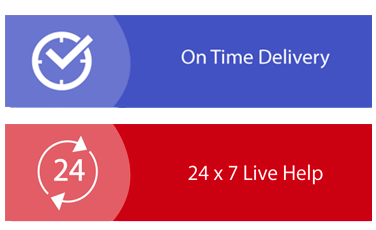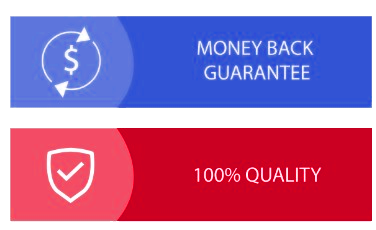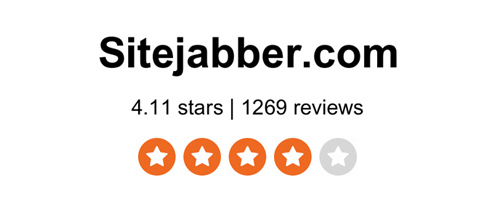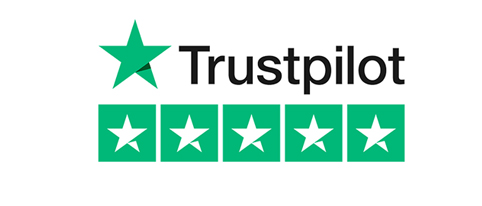MKT60010 Marketing Management Assignment Sample
Assignment: Case Analysis
Aim: This assignment aims to assess ULOs 1, 2, and 3 for the unit of study.
Nature of assessment: Individual
Word limit: 2,500 words
Case Study:
Tesco in China: How could things go so wrong?
Case study link - https://www.neilsonjournals.com/JIBE/JIBEpromos/TescoinChina14P.pdf
Solution
Introduction
TESCO is a well-known organization across the world, it deals with variety of goods ranges, however in China it failed terribly. There were many reasons of the failure of TESCO in China, one of
the key reasons were poor marketing and change in retail sector landscape in China. This study will focus on the Tesco, a big British multinational retailer's experience in China. Tesco's goal of actively participating into to the Chinese market did not succeed, considering the market's overall health and other favourable factors. The case focuses on the dynamic nature of the Chinese retail industry and the difficulties that companies like Tesco are encountering there. This example might be used by international business, marketing, and strategy professors to illustrate the difficulties of operating in China's rising market, where the battle for market share is fierce from both foreign and domestic firms.
The study will focus on key marketing issues & macro environment analysis including the PESTLE analysis of TESCO in china leading to threats and opportunities, further target customers and their behaviour along with the marketing mix & its 7Ps will be discussed to establish coherence of the marketing mix and target customers & Integration of the key and relevant marketing concepts. Further Survey will be conducted in order to attain the thoughts of people on failure of TESCO in china, lastly
2 key matrices for marketing and the justification of the choices will be done.
Problem Statement
TESCO have faced a sever failure in the China and its marketing strategy failed due to number of factors, such as strict laws of China, cultural and community issues of China, poor marketing strategies and lack of conducting analysis for the customer segment.
Macro-environment analysis using the PESTLE framework
The success of a company is heavily influenced by macroenvironmental factors. Shareholders may be able to spot new trade opportunities, increase the size of the firm's inventory, and broaden their reach into existing and potential markets by keeping an eye on these macro-environmental variables, which affect the demand for a company's goods. Tesco, with headquarters in the United Kingdom, is only one of many multinational corporations that takes use of macroenvironmental elements in its international business operations.
PESTLE Analysis
Table 1: PESTLE Analysis
.png)
Opportunities and threats imposed on TESCO’s operation in the Chinese market
Table 2: Threats & opportunities
.png)
Target customers and their behaviours
Target customer segment
The key customer targeted by TESCO is the young ones and the middle-class family who loves to have the best quality goods and food at an affordable process.
Age- 12-70
Demographics- Male, female, kids
Marketing Mix strategy for Tesco
Product- Food, clothes, stationery, cosmetics, gadgets, financial services, and more are just some of the many categories that Tesco caters to. With a constantly growing selection of goods, it meets the needs of each buyer. It offers a wide variety of categories stocked with top-quality brands. It also manufactures its own goods. Tesco has many of its own labels, such as Everyday Value, Tesco Value, and F&F Clothing. However, it's important to note that the kind of establishments clients frequent determines the variety of product categories that are available to them.
Price- Every store, but notably those in China, appears to have the greatest trouble with its pricing approach. In light of regional differences in purchasing power and price sensitivity, stores should set their own pricing. TESCO Offering products at discounted prices has the potential to rapidly boost sales. An intricate process for maintaining profit lies behind the seemingly inexpensive pricing (Woohyoung et al., 2020). The market reference price, incentives, and promotional activities are three major contributors to the pricing process. Tesco offers competitive prices, however, the quality of its items is compromised.
Promotion- The widespread use of many forms of marketing is remarkable. Increasing TESCO's prominence in consumers' minds via consistent advertising campaigns increased the brand's perceived value. Tesco has to include a greater share of new media in its advertising plan, including instant messaging, Weibo, movies, Weixin, and public transportation. Tesco opts for a more conventional approach to advertising and pays little attention to the ascendance of new media (Khanta and Srinuan, 2019).
Place- A recent study found that choosing a good market location is the single most crucial aspect of a successful retail business. TESCO should not only consider the physical location but also the political, economic, social, and cultural factors as well. the financial might of each area and the kind of enterprise that will thrive there. The location's accessibility makes for promising prospects. Also, Tesco would do well to target smaller urban centers in an effort to expand its customer base (Tian, 2020).
People- the key targeted customers of TESCO are people who are cost conscious, it is well known that TESCO offers the facilities at affordable costs which makes it a promisingly desirable supermarket.
Process- A business process is a predefined series of steps used by an organization to complete a certain job, such as fulfilling an order placed by a client. To complete a purchase at a physical Tesco shop, consumers simply retrieve their items and go to the cash register. They may also utilise automated teller machines (ATMs) to settle their bills (Hanaysha et al., 2021).
Physical evidence- Included in the category of "physical evidence" or "environment" are things like furniture, aprons, menus, brochures, logos, postcards, reports, signs, and equipment. Tesco's logo is fantastic, and the company makes clever use of colour. The merchandise at offline businesses are well organised, making it simple for shoppers to locate what they're looking for. The Tesco website is equally impressive in its design and use (Rahman, 2018).
.png)
Figure 1: 7Ps of the marketing mix
(Source: Brooks, 2020)
Marketing research to gauge Chinese customers’ purchase-related decisions
Survey
1. Are the new Laws and regulations of Chinese government concerns with the marketing of TESCO?
a. Agree
b. Disagree
c. Neutral
.png)
Figure 2: Survey 1
2. Does integrating the marketing mix with the old marketing strategies will improve TESCO’s customer base?
a. Agree
b. Disagree
c. Neutral
.png)
Figure 3: Survey 3
3. Will the digital marketing of the TESCO in china bring improvement in the market and ROI?
a. Agree
b. Disagree
c. Neutral
.png)
Figure 4: Survey 3
4. Is poor marketing and not following the culture of China and its community the key reason for TESCO failure in china?
a. Agree
b. Disagree
c. Neutral
.png)
Figure 5: Survey 4
5. Will the rise of E-commerce affect other industries?
a. Agree
b. Disagree
c. Neutral
.png)
Figure 6: Survey 5
6. Will the introduction of TESCO in the industry of China or in the market of China lead to the competition?
a. Agree
b. Disagree
c. Neutral
.png)
Figure 7: Survey 6
7. Is the implementation the digital platforms and technology in TESCO a sustainable approach?
a. Agree
b. Disagree
c. Neutral
.png)
Figure 8: Survey 7
8. Does the consumer purchasing habits and TESCO not doing proper analysis and research the key reason for TESCO failure in China?
a. Agree
b. Disagree
c. Neutral
.png)
Figure 9: Survey 8
9. Will the late entry into the retail market of china affect the growth of TESCO?
a. Agree
b. Disagree
c. Neutral
.png)
Figure 10: Survey 9
10. Is it necessary to conduct a market analysis of the old failure of TESCO failure and segment the customer base?
a. Agree
b. Disagree
c. Neutral
.png)
Figure 11: Survey 10
Result analysis
The result analysis of marketing casestudy assignment help has shown that people in the favor of TESCO must conduct marketing research before entering into the China market of retail and the old marketing strategies, as well as Chinese laws and regulations, have created a severe hindrance in the TESCO business. Hence, TESCO must come up with an extraordinary strategy this time to avoid the loss and follow all the guidelines of the Chinese government made for the retail industry.
2 KEY MARKETING METRICS TO MEASURE MARKETING STRATEGY SUCCESS
Metrics in marketing for TESCO are parameters tracked by professionals to assess how well their efforts are doing. These metrics may help TESCO assess how well TESCO marketing is influencing customers to do the desired activities and ultimately create revenue. Marketers are experimenting with new strategies to connect with the digital-first demographic. Consequently, they feel compelled to diversify the parameters by which their marketing campaigns are evaluated.
As, TESCO has severely failed in the China and is now looking forward to establish their market into the China, they are also coming up with the digital marketing strategies and engagement of the digital platform in order to align with the Chinese culture and personalised services. For such scenario, the 2 key marketing matrices are as mentioned below-
1. (Retention matrix) Return of investment- this will indicate how much TESCO has invested and the gain it acquired against its investment in the Chinese market.
a. Customer churn- That's the pace at which consumers cease purchasing or paying. Especially important for premium account businesses.
b. ROI Growth in existing customers- If this measure goes up, it means that TESCO's marketing and sales efforts are successfully persuading clients to buy from the business more often or spend more money overall. Instead, if there's a fall, it has to be looked into and fixed right away.
c. Net promoter score- This indicator informs TESCO how inclined a consumer is to promote business products or services to others using a scale between -100 to +100 (a rating of 1-10) (Valve and Meter, 2018).
2. E-mail marketing matrix- One of the most effective methods to contact and interact with your target audience is via email. TESCO Marketers may evaluate the success of the email marketing by looking at things like-
a. Email open rates- Open rate is the ratio of email opens to total receivers. An engaging subject line increases open rates.
b. Bounce rate- It's the number of undeliverable emails. Hard bounces (false or non-working addresses) and soft bounces (limited difficulties) must be assessed to improve subscription lists.
c. Click through rate- Higher CTRs suggest good email text, design, CTAs, etc.
d. New subscriptions- Subscriptions trends may effectiveness uncover brand engagement drivers. This digital advertising statistic helps direct email promotion and marketing (Salesforce, 2021).
Justification of choosing these 2 metrices
In the world of digitalisation, it is known that TESCO is looking to expand its business through digital platforms however, China has banned the internet.
Nevertheless, it has introduced its internet explorer and TESCO can used for marketing. These marketing strategies are the most effective one, as they both will offer the measures for ROI of TESCO and further through the analysis and the results, TESCO will be able to develop new strategies. Email marketing metrics will help in analysing the customer base (interested and non-interested people).
REFERENCES
.png)
BUS2003 Sustainability and Ethics Assignment Sample
Follow the below case study to complete the assignment -
The Chinese coffee chain, founded in 2017, described itself as "a pioneer of a technology- driven new retail model to provide coffee and other products of high quality, high affordability, and high convenience to customers". It had rapidly expanded to have more than 4,500 outlets by 2019. Luckin made false statements and fabricated its financial performance to lure in investors. Luckin failed to disclose accurate revenue and expenses, and also obtained money through false bank statements.
2. Purdue Pharma opioid marketing
Over the past 20 years, efforts have been made to hold Purdue Pharma and its owners liable for their contribution to the opioid epidemic. In a 2007 plea agreement with the United States, Purdue admitted that its marketing of the drug OxyContin was misleading and that it was addictive. Additionally, the vast majority of Purdue’s profits after 2007 resulted from its marketing of OxyContin. The wide use of opioids continued to grow, and in 2017, the U.S. Department of Health and Human Services declared the crisis a public health emergency
3. Theranos Fraud
Theranos was an American health technology company established in 2003, that claimed to have invented a device that could complete extensive blood tests with only one drop of blood. The company was not able to develop this technology properly and patients were misdiagnosed and given false test results. The founder Elizabeth Holmes misled investors and claimed much higher company profits than were achieved. She was 19 years old at the time of starting the company and was able to raise $700 million from investors. In 2022 Elizabeth Holes was found guilty of fraud and is awaiting her sentence.
4. CBS Sexual Harassment Scandal
The #MeToo movement saw millions of victims break their silence on stories of abuse, leading to convictions for some the most powerful men in politics, business and entertainment, and an improvement in sexual harassment awareness by the public. One of the largest institutions that faced widespread accusations of sexual misconduct was the American television and radio network CBS. High level players in CBS such as the CEO Les Moonves, TV anchor Charlie Rose, and executive producer Jeff Fager, lost their jobs after being accused of sexual misconduct, and a number of employees have spoken out about the company’s hostile culture.
5. Coca Cola greenwashing
Earth Island Institute filed a lawsuit against the Coca-Cola Company, the American multinational beverage corporation, for its false and deceptive portrayal as a sustainable and environmentally friendly company while in reality generating more plastic pollution than any other company in the world.
6. “996” overtime in Chinese tech companies
996’ work culture in China is the expectation in some industries, especially internet companies, that work should last from 9 am to 9 pm six days a week. Chinese company Pinduoduo took criticism for poorly handling the death of a staffer, only to face boycott calls a week later after the reported suicide of another employee. Other companies have also had deaths of young workers. Later, the Chinese Supreme People’s Court (SPC) and the Ministry of Human Resources and Social Security (MOHRSS) ruled 996 illegal, however many companies still pressure workers to follow this expectation.
7. Commonwealth bank financial planning scandal
Australia’s Commonwealth Bank customers lost hundreds of millions of dollars after financial planners put their clients' money into high-risk investments without their permission. The Senate committee looking into CBA's financial planning arm found the bank had not dealt appropriately with complaints over poor advice and alleged fraudulent practices by some of its planners.
8. Wells Fargo Fake Accounts
Wells Fargo is an American bank and financial company established in 1852. In 2016 it was revealed that the bank staff were opening additional accounts without the consent of the customers. The management of the bank had set very high sales goals for staff and many staff found the only way to meet sales targets was to create fake bank accounts. The bank fired approximately 5300 employees between 2011 and 2016 but claimed that upper management was unaware of the practices. The company faced civil and criminal suits reaching an estimated $2.7 billion by the end of 2018.
9. 3M ethical compliance
In 2021 3M was named as One of the World's Most Ethical Companies by Ethisphere Institute for 8th Consecutive Year. 3M's Code of Conduct is part of 3M's values and is a competitive advantage. It is what makes 3M's reputation as an ethical company among consumers and across many industries. 3M leaders create and promote a workplace environment where compliance and ethical business conduct are expected and encouraged by leading through example.
10. Lego sustainable materials
Three years ahead of schedule, the LEGO Group achieved its ambition to balance 100% of its energy use with energy from renewable sources. Lego then invested about $150 million in the establishment of a Sustainable Materials Center at it Danish headquarters in Billund which set more than 100 employees on the task of Lego using fully sustainable materials in its products by 2030. They aim that by 2025 all LEGO packaging will be made from renewable or recycled materials, will be made as efficiently as possible, and will be easy for consumers to recycle.
Solution
Introduction
Ethics and culture are important parts of any business unit. It helps to create and build trust amongst different stakeholder groups, thus, improving longevity in competitive market share. To obligate businesses to follow ethics, not only do owners and business people establish morally obligated rules; even national and international governments have created rules for enabling individuals and businesses to follow ethics.
Through this marketing case study help , the aim is to define the importance of ethical corporate culture and its linkage with stakeholder theory. It is very important as unethical practices impact business growth and influence society. The case study will help to understand the importance of ethical practices and why the fabrication of accounts is detrimental to business as a whole. The analysis will be done by obtaining information through secondary sources by exploring literature through websites, peer-reviewed journals and others.
Literature Review
Financial scandals have been part of businesses and corporates for a longer time. This has created impacts on economies and societies. In the past decades, fraud in financial scandals has had disastrous consequences, resulting in huge losses for vital stakeholders like investors, creditors, and the business. Financial fraud deals with the misappropriation of accounts, assets and balance sheets which gives a fake representation of the company to investors, which in the long run will result in loss, impact on brand reputation, and criminal and legal charges (Giroux, 2013). Luckin Coffee Chain has falsified accounts, thus creating a situation of distrust amongst different stakeholder groups. The company fails to implement ethical corporate culture, which will impact the business in the long run. The company also fails to build interconnections with stakeholders, investors, customers, banks, and others.
Ethical Corporate Culture and its importance
Toms (2019) examined all the incidences of financial fraud occurring from 1720 to 2009, the paper aimed to highlight regulatory responses for implicating reporting in accounting and finances. The review suggested that all evidence related to frauds and financial scandals was skewed particularly towards banking and finance-related sectors.
Darwish & Abdeldayem (2019) aimed to study and examine the relationship between managing risks and business ethics within GCC areas. The authors highlighted that financial crises, scandals and unethical compliance of corporations had raised awareness of business ethic compliances. The study used surveys from more than 970 individuals from Gulf countries, including Bahrain, Saudi Arabia, Kuwait, Oman and UAE. The empirical findings indicated that ethics mediate strong relations with risk management and business ethics as efficient managing of different business risks is highly reliant on ethics. Thus, the evidence revealed that it is important for all managers to maintain an ethical culture that will ensure that employees follow, thus creating an ethical culture. The study also highlighted that business ethics and risk management should rely on models and frameworks that will cover all phases related to identification, assessing and solving issues of unethical ones.
In this view, humility has been increasingly recognized as one of the important attributes at all levels of employees for building successful and ethical organizations. The research focused by Cortes-Mejia, et al. (2022) on humility mediated by CEO and its impacts on collective perceptions to indulge in strategic decision making. The secondary research indicated that CEO humility influences decision-making that promotes ethical organizational culture. The secondary research was supported by survey results conducted on 120 small and medium firms. Thus, the authors highlighted that humility and strategic leadership greatly impact business ethics.
Additionally, businesses operate in a dynamic business environment requiring managers and owners to make continuous improvements to build a competitive edge. Jurcevic (2022) conducted a literature review that indicated several factors influencing the development of integrated management systems. To ensure an integrated management system, it is important to embed organizational culture with values and integrity. Quality culture is a subset of overall organizational culture, which implies acceptance of quality patterns. Thus, the article highlights the importance of organization for influencing quality working patterns in a morally and ethically way.
In another article by Asher & Wilcox (2022), financial risk management practice was explored using the vertical ethical lens. The article highlighted that managing risks should be embedded in organizational culture, building on virtue ethics, value alternatives and normative expectations. Application of virtues in organizational culture needs reflective and collaborative practice from employees at all levels, while risk culture should be developed by reviewing virtue ethics. In contemporary organizations, risk cultures could be developed with leadership cultures not constructed on monetary capital. Organizations need to recruit and retain financial managers who have developed ethical virtues, while they should not be overwhelmed with legal requirements and compliances. Developing virtue ethics becomes important during leadership and risk failure; internal ethical values help organizations conduct functions on moral and ethical grounds.
Stakeholder Theory
Stakeholder Theories is a branch of capitalism which puts stress on interconnected relations among the business and important stakeholder groups like customers, suppliers, employees, investors, and others (Zoghbi-Manrique-de-Lara & Viera-Armas, 2017). R. Edward Freeman developed this theory in 1984 to address moral and ethical values that should be applied when managing organizational functions. It is important to create value for each stakeholder group to cope with competition and survive all stages of the business cycle.
Kim (2022) analyzed news articles that reported South Korean firms' CSR activities. The findings revealed that companies like LG, Samsung and Hyundai had conducted CSR activities during Covid- 19. The companies rapidly identified requirements from routine business activities and responded quickly and flexibly. It was revealed that stakeholder theory was aligned with the CSR activities of those companies as they adopted agile and systematic approaches for targeting specific stakeholder groups for contributing to the creation of social values.
Valentinov & Hajdu (2021) claimed that stakeholder theories usually encompass an instrumental and normative variety, of which the relationship is very unclear. This exhibits classic tensions amongst aspects like self-interests and moral obligation. Valentinov & Hajdu (2021) developed strategies through the study for directing the classic tensions. The study's findings revealed that systematic theoretic information would reflect the functions of real-time institutions. Thus, normative and instrumental stakeholder theories reflect modern organizations' institutional structure. The practical implication of the findings is that managers should be able to adjust complexities when moral dilemmas. Hence, it becomes important for the organization to embed normative and instrumental aspects of stakeholder theory when devising strategies for ethical conduct. Although Waheed & Zhang (2022) the study created arguments that corporate social responsibility embeds three theories: legitimacy, stakeholder and institutional and others. The findings revealed that all the theories are interrelated; hence, underpinning theoretical underpinnings is important for indulging in ethically and morally binding practices.
In addition, Fernando & Lawrence (2014) explored stakeholder theory and practices by evaluating the impacts of corporate socially responsible practice, sustainable competitive performance, and ethical and cultural practices. The empirical and secondary data collection methods revealed that corporate socially responsible practice positively relates to ethical and cultural practices in countries like China and Pakistan. Thus, the findings concluded that sustainable performance of the firms could be achieved by embedding ethical, cultural practices and corporate social responsibility.
Methods
The case study chosen for this assessment is Luckin Coffee house. The Lucking Coffee Chain was established in the year 2017. The coffee chain is determined to be a technological pioneer in driving new retail models for providing high-quality and affordable products and customers' convenience. Rapidly the chain was expanded to 4500 outlets, although it had made false statements. It had fabricated its financial performance to attract investors. This failed to disclose accurate information on revenue, costs, and different sources of income. To attract investors, it forged its accounts, while it fabricated bank statements to obtain investments in its business.
To find relevant articles for this study, renowned portals like Proquest, Sage and Google scholar were used. Phrases like "the importance of ethical culture," "Stakeholder theory," and "ethical business practice" were used. The timeline from 2012 to 2022 was selected to acquire updated insights, out of which articles published from 2015 to 2022 were chosen. Each article with pdf access was chosen to allow the scholars to review the entire article through qualitative descriptive techniques. While browsing Proquest, all the relevant articles were found on the first page. Hence, the majority of the information was selected from this portal. Other portals like Google Scholar and Sage were also used for collecting information on the topic.
The articles were selected on their publication date, covered concepts, and linked with the topic. More than 20 articles were searched for literature review, although only 12 could be used within the study.
Case Findings and Recommendations
Ethical conducts are an important part of any organization as it impacts related businesses, employees and important stakeholder groups. The case study revealed that Lucking Coffee had forged its income and bank statement to secure money from the stakeholders. It has highlighted underlying factors like lack of ethical organizational culture, issues while managing ethical dilemmas and false targeting of the stakeholder group.
Firstly, literature identified that fraudulent activities and financial scandals had increased worldwide in 10 years. This suggests a lack of ethical climate within the organizations. Ethical and moral dilemmas of employees at all levels are guided through strong organizational norms and inspirational examples from top management. In the case of the scandal of Luckin Coffee Chains, it is evident that the organization of more than 4000 stores lacks strong organizational norms, due to which employees in the accounts department were encouraged to forge income and bank statements. It might also be the case if they are encouraged and ordered by senior authorities to misguide the stakeholders through enhanced profits and fake disclosure of financial accounts. In addition, the company lacked employees with strong eternal virtue for ethics. Hence they did not protest the management team that persuaded them to follow unethical conduct.
Darwish & Abdeldayem (2019) highlighted strong relations between risk management and business ethics. Thus, the case study reveals that the coffee chain giant lacked proper risk management techniques, which impacted following ethical conduct while managing operations and seeking investments. By forging the revenue and income statement, Luckin Coffee house created a higher risk for the business by adopting unethical practices for seeking investment to support its business. Since the document produced for the investors were forged, the business could fall into serious legal charges and penalties. Also, distrust amongst the investor stakeholder group would impact its future investments and influence its survival and expansion strategies. The legal litigations would impact its brand reputation, thus impacting its capability to attract a customer base. Since the CEO did not mediate ethical behavioural patterns, the employees lacked moral persuasion to produce a report on forged data.
In addition, the company lacked CSR responsibilities, impacting its target of stakeholder groups. As Waheed & Zhang (2022) evidenced that CSR and stakeholder theories are interconnected. Besides stakeholder theories. This statement was further evidenced by Fernando & Lawrence (2014), who argued that corporate socially responsible practice is positively related to ethical and cultural practice. Stakeholder theory reveals that organizations operate ethically and morally to create values for different stakeholder groups. The company failed to apply underlying principles of stakeholder theory. By forging the documents and misrepresenting the figures, Lucking Coffee house did not aim to create value for its investor stakeholder groups, as the company's poor financial performance would result in losses for all.
Recommendations
Lucking Coffee House has adopted unethical practices for conducting business which will impact its business growth in the long- run. The unethical practices will impact stakeholder relations, backed by a lack of ethical corporate culture. The literature has evidenced that ethical culture is important for long-term business growth while adopting CSR practices enables the companies to create value for stakeholders, fulfilling underlying principles of stakeholder theory.
Luckin Coffee House needs to embed ethical corporate culture. Thus, the CEO and top management are recommended to enrol in training and mentoring session, which will provide insights on the importance of business ethics. The sessions will help modify the perceptions of unethical practice, enabling the senior team to establish ethical culture by setting examples for themselves.
The organization is recommended to develop strong operating procedures requiring each employee to abide by ethical and moral conduct of the responsibilities strictly. External auditors should develop the store operating procedures to reduce any biasness while recording figures or performing any financial activity (Zoghbi-Manrique-de-Lara & Viera-Armas, 2017).
Luckin Coffee House is recommended to employ technological tools for recording all the transactions without manual interferences. One software type for recording, managing, and sharing financial data should be used across all 4500 stores to maintain ethics and the same accounting principles. The updates on the financial position of the company should be updated with important stakeholder groups frequently. This will help to embed on transparency principle.
Also, it is recommended to Lucking Coffee House that underlying principles of corporate social responsibility should be embedded within the operational fronts to follow ethical conduct. This will include inviting external and independent auditors to validate the ethical and moral conduct of the operations (Kleyn et al., 2012). All the directors should be independent, thus following the transparency principle under CSR activities. Since CSR and stakeholder theory are interlinked, it will help to create value for specific and general stakeholder groups.
Luckin Coffee House requires ethical culture; hence, it is recommended that employee meetings should be conducted frequently. The meetings would include communication of ethical expectations, deployment of punishment and rewards on such behavioural patterns, and creating perceptions to follow ethical conduct when faced with dilemmas. Ethical training programs should be established through seminars, workshops and others for all employees.
Conclusion
Luckin Coffee house was founded in 2017 to provide good quality and affordable coffee to its clients. Despite a huge expansion of more than 4000 stores across the region, the company failed to meet stakeholder expectations and adopted unethical means of raising funds. The literature discussed that underlying factors of unethical conduct are lack of ethical corporate culture, risk management techniques and reduced application of stakeholder theory. It is recommended that Lucking Coffee house undertake steps for improving ethical and moral compliance through offering ethical training, conducting external audits and deeming all the board of directors independent. It is also recommended that Luckin Coffee House should use strategic options for acquiring profits and meeting stakeholder requirement which will reduce the impetus of unethical conduct.
References
.png)
BUMKT5902 Marketing Management Assignment Sample
Assignment Brief:
You are required to demonstrate your understanding of marketing theory as we have covered in activities and material in class. This assessment relates to the content we cover in Topics 1-5, use these lectures and resources as a guide to what you need to consider in your assessment. You will perform better in the assignment if you are able to integrate marketing theory into your analysis and use academic theory to develop a balanced critique of the marketing environments.
Your scenario for Assessment 1: You are a marketing consultant for a fictional company of your choice (see the Moodle shell to decide which case study you will commit to using for all assessments in this course).
You are required to prepare a 1500 word situation analysis for the company – consisting of an environmental scan and marketing insights – in report format written to academic conventions and of professional quality.
You will need to research the macro-environment relevant to the company, and because it is a fictional company, you can elaborate on some of the micro environmental factors where relevant – you will refer back to these details in Assessment 2 and 3.
You should consult a mixture of key academic journal articles as well as contemporary industry sources to complete your analysis of the macro and micro environments.
Drawing on your research, you will include prominent issues in a SWOT analysis, and highlight important points from the SWOT in a short summary that provides your client with key details to help inform their decision making for the next steps in their marketing management.
In addition to the rigorous research you will carry out and write up, you are also required to develop an info graphic which provides a visual summary of the key findings from your research. There are further resources to help you approach this aspect in the Moodle shell. Include the infographic as an appendix to your report.
Remember, in this assessment you are writing for a ‘client’, so you should also focus attention on writing a professional quality one-page Executive Summary – resources to help to with this are also available in the Moodle shell.
As a guide, you should include a minimum of 8 relevant academic journal articles and 2-3 contemporary reputable industry sources.
Report Structure - Use the following structure to organise your report:
Title page
Executive Summary
Table of Contents
1. Introduction
2. Scope of Report – background to company and purpose of report
3.0 Environmental marketing analysis
3.1 Include relevant subheadings
4 SWOT Analysis
5. Conclusion
References
Case Study
BUMKT5902 - Case Studies for 2020
OPTION 1: Rad Eddie - High-end fashion label
Rad Eddie is a high-end fashion label specialising in organic denim ranges. Established in 2004 by two university friends, Alex and Soni, the label has experienced steady growth and featured in several high profile fashion weeks over the years. At the beginning of 2020, Rad Eddie had an international distribution network, with partners in world-renowned fashion hotspots such as Paris, New York, Hong Kong, Singapore and Sydney. However, the global pandemic of COVID-19 brought a rapid halt to international trade and Rad Eddie’s supply chains and key markets were drastically affected. As the world looks to recover from the impact of COVID-19 and businesses navigate the economic and social realities of a post-COVID global marketplace, Rad Eddie’s owners are now seeking your advice as they look to recommence design, manufacturing and supply/retail of their fashion products over the next few months.
Rad Eddie’s owners are very conscious that one of their key target markets (i.e, young women aged between 20-30 who love to socialise and keep on-trend) have had their lifestyles terribly impacted through such things as the closure of social venues (e.g. cafes, restaurants and nightclubs). This COVID-19 event not only affects how these women spend their time and their money, but a proportion of target market were working in the hospitality industry prior to COVID-19 shut downs. Many are now without incomes, and those who are in employment are very conscious of saving extra dollars due to the uncertainties of the economy at the moment. As many are without their normal social outlets, their need to have new outfits for a special occasion or work functions has decreased.
Rad Eddie’s owners have also established a strong commitment to sustainability over the last decade through initiatives focused on their staff and contractors, and their environmental impact. COVID-19 presents a range of ethical and corporate social responsibility considerations for all businesses attempting to recover their businesses from COVID-19. In some cases, businesses have been motivated to embark on added commitments to sustainability, in other cases; the focus on economic survival will see businesses cut commitments to social and environmental initiatives.
Solution
Introduction
Rad Eddie - High-end fashion label is known for its fashion business by introducing its potential in the context of the macro environment. The fashion business in Australia is growing efficiently and effectively. The current study is to explore the issues faced by the company from the macro environment that has affected the organizational operation and efficiency. It has been noted that the company is responsible for managing the consumer in a better and more effective way. GDP growth has been affected by 1.5% (Baldwin & Mauro, 2020). The company had been widely affected as a result of covid-19 when the economy was in crisis. It has undergone a drastic transformation and it is important to manage a better understanding of the macro and micro analysis of the company. The study is to identify the major problems associated with the industry from the external environment of the business and it is to be used in the study for exploring relevant solutions. It incorporates the fashion industry in Australia in a better way and manages to improve organizational efficiency in a significant way. There is a significant requirement for analysis of the political and economic environment and analyse of the issue from the swot analysis for best assignment help.
Scope of report background to company and purpose of the report
The company produces organic denim and it is more concerned with the management of the target market for young women aged 20 to 30 years. The company has introduced a large supply chain and market for Rad Eddie. It is important to create a situational analysis for the organization. Rad Eddie company is a part of the fashion industry that is growing and moving in a faster way. The company has grown significantly in course of time. It has been noted that the organization needs to manage the efficiency and effectiveness of the sector by managing the product and services (Madsen, 2016). The mission of the company is to meet Australian fashion satisfaction. The organization offers potential support to the consumer across Australia offering a valuable and effective business environment. The organization is one of the largest competitors in the fashion industry. The report is to identify the macro-environmental issues faced by the organization under the current circumstances. The purpose of the report is to identify the organization's lack of proper approach towards 49% young women population in Australia.
Environmental scan and market inside
The strong distribution network of the company will offer it a competitive advantage in the fashion industry and it is important to invest more in the technology for better innovation. It is important to provide a significant contingency planning for distribution networks at the different geographical locations. The innovation will support the organization in improving productivity and utilize the workforce for better and positive outcomes in the workplace. It has been noted that the organization has faced the major challenge of skill workers shortage, high cost of packaging and low-profit margin in the context of the work environment. The impact of COVID-19 remained at the centre of the organizational problems. It is important for the business to manage these challenges in the context of the work environment. There is a significant requirement to improve the process of recruitment and selection and design the compensation policy with unity to manage the cost and quality of the human resource.
Conclusion
It can be said that the fashion sector has a considerable role to play in the management of resources over a period of time and it is difficult for the business to maintain efficiency and effectiveness. The organization is found to have been affected by the shortage of skilled workers, the high cost of managing sustainability and packaging along with the low-profit margin of the organization in the context of the work environment. The pandemic and subsequent lockdown had a negative impact on the organization with high inflation and high cost of borrowing.
References
.png)
BBE351A Ethics and Social Responsibility Assignment Sample
Case Study:
Apple Took Three Years to Cut Ties with Supplier That Used Underage Labor Seven years ago, Apple made a staggering discovery: Among the employees at a factory in China that made most of the computer ports used in its MacBooks were two 15-year-olds.
Apple told the manufacturer, Suyin Electronics, that it wouldn’t get any new business until it improved employee screening to ensure no more people under 16 years of age got hired. Suyin pledged to do so, but an audit by Apple three months later found three more underage workers, including a 14-year-old. Apple, which has promised to ban suppliers that repeatedly use underage workers, stopped giving Suyin new business because of the violations. But it took Apple more than three years to fully cut its ties with Suyin, which continued to make HDMI, USB and other ports for older MacBooks under previous contracts. A person close to Suyin, which is headquartered in Taiwan, said that the company hadn’t intentionally hired underage workers and that it had passed Apple’s audits in later years.
Apple no longer does business with Suyin. But the previously unreported episode, drawn from documents reviewed by The Information and interviews with people who have direct knowledge of Apple’s dealings with Suyin, is a stark example of the dilemmas Apple faces in fulfilling its pledges to put workers first and not use manufacturers that consistently violate labor laws. And it demonstrates the fine line Apple has to walk in balancing the need to maximize profits with the expectation that it will prioritize good working conditions for its own employees and its suppliers’.
Apple has said in its supplier responsibility reports, which examine its compliance with labor, environmental and safety policies, that it has zero tolerance for the use of forced and underage labor. Suppliers must pay all wages and benefits as required by local laws and can’t make employees younger than 18 years of age work overtime or nights. If Apple finds violations of its supplier code of conduct, its suppliers typically must fix them within 90 days. But Apple faces problems in immediately removing suppliers who consistently breach these rules: Most obviously, there aren’t many alternative manufacturers that can easily pick up the slack. New suppliers can take years to meet Apple’s exacting standards for quality and volume.
In the case of Suyin, Apple’s procurement team was reluctant to abruptly shift orders to other suppliers because it would have created delays and incurred higher costs, said a former employee. In interviews, 10 former members of Apple’s supplier responsibility team—the unit in charge of monitoring manufacturing partners for violations of labor, environmental and safety rules— claimed that Apple avoided or delayed cutting ties with offenders when doing so would hurt its business. For example, the former team members said, Apple continued working with some suppliers that refused to implement safety suggestions or that consistently violated labor laws.
Although Apple says it won’t hesitate to remove suppliers, several former Apple employees say removals are rare. Between 2007 and 2020, Apple removed just 22 manufacturing facilities from its supply chain, according to its supplier responsibility reports. That figure represents about 1% of the roughly 2,000 locations where Apple suppliers work on its products, Apple’s internal data shows. Some suppliers have multiple locations.
“Our goal is to work hand in hand with suppliers to improve their management systems, rather than to simply remove them from our supply chain without correcting the issues we discovered,” Apple said in its latest supplier responsibility report. “In the event that a supplier is unwilling or unable to improve operations to meet our requirements, they risk removal from our supply chain.”
One factor that contributes to the low number of removals is that Apple’s supplier responsibility team can’t unilaterally ban a supplier because the team ultimately reports to the head of operations. It can make recommendations, but higher-ups in manufacturing and procurement make the final decision, former members of Apple’s supplier responsibility team said.
The size of Apple’s supply chain also makes it inherently difficult to monitor for labor, environmental and safety violations. Former Apple employees said factory audits, like the one that uncovered Suyin’s underage workers, aren’t completely effective in catching violations. For one thing, Apple often notifies suppliers of upcoming audits months in advance—surprise audits are in the minority. Apple said in its latest supplier responsibility report that it interviewed more than 52,000 supply chain workers in 2019. However, through its contractors, Apple is indirectly responsible for employing between 1.4 million and 1.8 million workers in China each year.
Another issue is that there are few incentives for suppliers to fix problems or for Apple’s procurement employees, who visit factories more often than auditors, to point them out. The procurement employees are mostly evaluated based on how much they can drive down the price of components. “On your performance reviews, you were supposed to report how much money you helped Apple save. You couldn’t report that you saved Apple from a PR black eye,” one former long-time Apple procurement employee said, referring to the self-assessment portion of personnel reviews.
Sun Hye Lee, an assistant professor at Loughborough University in the U.K. who has written about Apple’s supplier responsibility challenges, said Apple’s unwillingness to impose tough penalties on suppliers makes it easy for those suppliers to repeat their violations. “It’s giving the message to other suppliers that Apple won’t leave us forever, so we just have to hold the line for a while and then we can go back to what we were doing before,” she said.
This assessment consists of THREE compulsory questions. Answer all questions based on the situation described in the case study above.
1. Identify 3 main stakeholders that Apple must consider in dealing with the use of underage workers by its suppliers. Explain how Apple’s decisions can possibly impact each of the stakeholders
2. By applying the stakeholder theory, explain the most ethical decision that Apple should
take when it finds out that its supplier has used child labour. Explain your answer.
3. By using teleological theory, explain the most ethical decision that Apple should take when it finds out that its supplier has used child labour. Explain your answer.
Solution
1. As per the case scenario of an ethical issue, Apple deals with the ethical issue of underage workers. The main stakeholders who are responsible for the same are contractors, suppliers, and manufacturers. The scenario has conveyed that the referred three stakeholders are directly involved with the issue of underage workers for Apple (Apple, 2022). The contractors on the part of Apple take care of the recruitment. Hence, it is quite clear that they are well informed regarding the issue. Manufacturers are directly dealing with the workers and have all the information or acknowledgment about their underage though remain ignorant of the same. Suppliers, though they are not directly involved with such ethical considerations; still, they support the same to maintain the supply and demand process of the market. The decision of Apple can be much more impactful for all referred stakeholders. The contractors and the manufacturers can completely be rejected by Apple to do any sort of business due to such unethical practices. On the other hand, the suppliers even can have threats due to enough availability of suppliers to switch by Apple to not to entertain such unethical practice.
2. The stakeholder theory conveys business ethics and management for every stakeholder with enough focus on the interconnected relationship among all (Barney, and Harrison, 2020). On the part of Apple, the most ethical decision would be having such policies which immediately reject the recruitment of underage people. The decision even needs to accommodate implementation with enough acknowledgment of such policy in the scenario in every country. Understanding the interconnected relationship between every stakeholder, it is important for Apple to have a meeting or seminar or any set of communication to convey the policy to every stakeholder with otherwise consequences to make them aware of the negative outcome of such unethical practices. With created, implemented, and acknowledged policy of recruitment to not to hire any people, Apple can have better justification for the legal structure as well as for the suppliers. It would even be an important decision to take a direct part in the recruitment process to not to blame any supplier solely for such unethical practices as throughout monitoring and evaluation, Apple not only can remove such unethical practices from the organizational culture, rather it can even have a better employer-employee relationship to have the best outcome of stakeholder theory.
Teleological theory for assignment help conveys the theory of morality which derives moral or duty obligation through the perspective of desirable or good considerations to have at the end of the process. It focuses on the goal of ethics (Juvrud, and Gredebäck, 2020). As per the case scenario, the suppliers are involved in the unethical practice of child labor. It is severely impactful on the reputation and brand image of the organization as well as directly violates the legislation. Exercising Teleological theory, Apple can better reciprocate the entire scenario to the suppliers with negative consequences to find out the common ground in this particular perspective. Apple cannot remove or reject all the suppliers or the underage workers immediately. Hence, it would be better for Apple to make the suppliers aware of such ethical issues beforehand so as not to face such complexities afterward. Ethical training can even be a better way out to make the suppliers more focused on ethics or moral values. The positive outcome can further be initiated if the suppliers would be involved in the decision-making process. By understanding their perspective, if Apple would take any decision regarding the issue, then the decision can have a far-reaching impact as no compulsion would be there for implementation of the same. In this particular concern, Apple can exercise the Pareto principle and brainstorm as decision-making styles to have the best outcome with minimum input through the support of everyone.
References
.png)
MKTG7512 Strategic Marketing Management Sample
The task:
You'll select a focal product from a company of your choice, conduct a situational analysis of the company, analyse the industry's competitiveness, and provide suggestions on the segmentation of the market and the potential repositioning of the product.
The report should include the following components:
(1) A title page, including the course code, your name and student ID (1 page)
(2) An abstract or executive summary of the report (1 page)
(3) (From point 3 starts the main body of your report): A background section regarding the firms, the products it offers, and the focal product your case study is about (2 pages)
(4) A situational analysis (i.e., the competitive position) of the company using SWOT analysis (2 pages)
(5) An analysis of the industry competitiveness based on Porter's five forces model (2 pages)
(6) Provide a segmentation analysis of the relevant consumer market (2 pages)
(7) Select two key product attributes of the focal and competing products, and construct a perceptual map onto which the products are located (2 pages)
(8) Compare and contrast the current positioning strategy the firm adopts about the focal product and potential repositioning of the focal product or development of a new product,
Solution
Introduction
Present study is based on focal product of the company, such as Netflix. Focal product is referred as the central and most important product of company. For analysis of present study, focal product of Netflix such as subscription based video streaming services has been selected. It is because, such services are one of the most prominent services and company is generating significant revenue from this only. For Assignment Help The present study contains competitive position and industry competitiveness analysis, by application of SWOT method, and Porter’s five forces model. Subsequent to this, in-depth discussion regarding segmentation and product positioning is provided. At last, discussion about the betterment of existing product is explained by analysis of its features, attributes, and product slogan.
Background section
Netflix was incorporated in 1997 by Reed Hasting and Marc Randolph in California, USA. It’s an American top content creator and production company. Netflix is a content providing platform and a production company which offers various streaming services to its customers like award winning movies, documentaries, series, anime, TV shows etc. which are subscription based, a premium has to be paid to stream its services. At initial stage of Netflix, it deals with selling and offering of DVD services on rental basis to its customers, and today it is streaming service provider in almost 190 countries in the world to its subscribers but still Netflix has continued its rental services of DVD’s till now (Brennan, L. (2018).
The reason of selection of this company is its market share of content streaming services as well as good market performance. Users can stream through various devices by log in to their laptops, smart TV, tablets, smart phones. According to recent analysis of year 2020 Netflix has accounted for more than 45% of streaming subscribers of the market share and it’s been reported that Netflix has generated revenue of$25 billion in year 2020 along with the 200 million paid subscribers. The worth of Netflix is $162 billion as per the April 2020 report (Netflix, 2020).
The product for the analysis of present study is the subscription based streaming services, one of the most vital elements of Netflix. In the year 2018, Netflix achieved 8th position of the top ten streamed shows with respect to subscription streaming services. There are diversified contents available at Netflix even the house produced contents. The criteria of its subscription are divided into three tiers and each tier is charged different and provides different level of services and benefits to its users. Also, Netflix has amazing features like customization of subtitles, secret menu, its services can be used on the smart TV’s, it allows watching simultaneously on four screens also in terms of original content creator Netflix always stood out as compare to its competitors which are amazon prime, YouTube, Disney+, and Hulu. The major reason behind its success is its services which keep the needs of subscribers at heart, its technological innovations and the courage to adopt different business strategies to provide direction to its company (Jenner, 2018, pp. 105-118).
Competitive position and industry competitiveness
SWOT analysis
SWOT analysis is a tool for evaluating the four elements of business such as strength, weakness, opportunity and threats. The strength and weaknesses analysis internal company factors and opportunity and threats are the external factors, by which company’s current and future operations are affected and aid in development of strategic objective.
.png)
Table 1 SWOT analysis of Netflix
STRENGTH
Strengths are the core competencies of the business which provides a competitive advantage to it as compare to its competitors. The core strengths of the Netflix are its strong brand equity, ad free contents, original contents and a huge customer base which makes it different and unique from its competitors and serve as its strengths (Van der Voet, 2016). It gives an amazing experience to its users through the ad free content which do not interrupt their entertainment with the interruption of ads, as Netflix fulfill the needs of its users and try to satisfy them at its best results in the large subscriber base for it. According to the annual report of 2020, Netflix has around 209 million of user and no other platform is currently enjoying this advantage (Netflix Investor, 2020).
WEAKNESS
Weaknesses are the disadvantages of the company which stops it to achieve success. However, there are some weaknesses of Netflix too. The Netflix does not have copyrights for the content available to it apart from its own produced content. After a particular point of time the content available on it can be easily seen on the other websites. Also, the business model in which Netflix works can easily get replicated because it is not so unique or hard to replicate it. There is various similar company providing same services (Maddodi, 2019, pp. 41-51). The requirement of internet is another disadvantage for the Netflix as the users require access to internet to stream its services, the heavy dependence on internet especially for users with low internet connection becomes the weakness of the Netflix to gain such subscribers.
OPPORTUNITY
It is an external factor which helps in the development and to grow business and its revenue. The opportunities available for Netflix is the expansion of its business in new markets as the platform is available over 190 countries of the world and by taping the recently most used service market group Netflix can increase its revenue (Gupta, 2019). The evolution of product mix, to attract the youth Netflix can offer them some international contents which are being watched in other countries this would attract new users and give additional interest to the platform. Netflix has the opportunity to enhance the variety of content it offers by further working on the local content, bringing that to the subscribers this would also improve its performance in the market and attract local people of the region toward this platform (Derr, Georg, &Heiler, 2021, pp. 17-24).
THREAT
The threats are the difficulties faced by the company in its journey. The most effective threat to Netflix is increasing competition in the market the competitors like amazon prime, Disney+ are also offering the same quality of services apart from content from other producers they are also now producing in house content to attract more subscribers. Another threat is the illegal streaming od content, the privacy of content is not much which comes as threat to the companies like Netflix because the non-users illegally leak the content. Also, the censorship could become threat to Netflix, if they have to take approval from the censorship to present their content to the subscribers (González, Membiela-Pollán, &Cuns, 2020, p. 252). This is not so far as the government is now a day more concerned about the censorship of content.
From the above SWOT analysis of Netflix, it can be said that the challenges faced by the company internally and externally can be improved and as long as Netflix innovates its thoughts and ideas it will remain in the race of competition and can maintain its position in the market of entertainment.
Porter’s five forces
Porter’s five forces analysis is a technique that determines and evaluates the five competitive forces that creates impact on each industry and support in determination of weaknesses and strength of industry.
.png)
Figure 1 Porter's five forces
Threat of new entrants
Threat of new entrants for Netflix is a serious issue as there are several other companies planning to stream their services like it and also producing their own content. However, the barriers for new entrant are high due to heavy investment in producing own content and even licensing it from other producers require huge cost. However, according to the size of the organization the technological and marketing cost would not be an issue. Also, due to increasing competition among the competitors who are already in the industry are launching their new streaming services (Hadida, Lampel, Walls, & Joshi, 2021, pp. 213-238). The time is far when a single user would have various subscriptions available and maybe he would quit this subscription. Hence, the Netflix must carefully observe the new entries as the risk of new entrants is high for it.
Power of Suppliers
The power of suppliers in the industry is considered as moderate, and in case of Netflix, it is same. The high extent of impact on prices is because of the limited number of companies generating media and entertainment services or subscription based streaming services. Acquisition of a contract and obtaining license to distribute the content consists of negotiation on pricing in which supplier possesses control (Øverby, &Audestad, 2021, p. 105). It has been seen that, Netflix has significant competition with traditional media distributors; therefore it has to reflect more flexibility in the agreement as compared to conventional media. In the similar way, the supplier possesses lesser bargaining power at the time of contracting with traditional media distributor, but online distributor such as Netflix come from a significant extent of influence from the suppliers.
Power of Buyers
The power of buyer in such industry will always remain high as there are plenty of option available to them, they can easily cancel or continue their subscriptions according to their wish. Also, the price sensitivity is very less in this industry all the channels are offering their subscription at almost same rates which is not the matter of issue, the quality of content is most important factor which attracts the users toward subscription. In recent scenario the number of users is increasing vastly because of variety of services offered to them from a single subscription (Raats, & Evens, 2021, p. 65). Also, these subscribers are not bounded in contract they can quit whenever they want to therefore there is more power in hands of the consumers and the power of buyer tends to stay high due to these reasons.
Threat of Substitute Products
Threat of substitute product is less for Netflix as the demand of the television broadcast view is declining according to the yearly reports of people watching it; in 2019 it was 50min less than that of 2010 and still declining. The demand for Netflix has rose 7min than that was in 2017 compared to 2019. The YouTube has a great percentage as it provides recorded and live streaming; it is about 12% of the total viewing the YouTube is being watched (Porters five forces analysis for Netflix, 2020). The younger generation is now shifting towards the streaming services from the television broadcasts thereby the risk of substitution is low for Netflix.
Competitive Rivalry
The competition for Netflix is high as the competitors like amazon prime is offering other customer benefits to its subscribers like fast delivery, books etc. to increase its subscriptions. Also, some of the popular contents of Netflix are being removed like friends to get stream on some other sites. Therefore, the competition is high and risk of competitive rivalry (Kweon, &Kweon, 2021, p. 7).
.png)
Table 2 Porter's five forces analysis
Segmentation and Product Positioning
Segmentation
There are usually four consumer characteristics of market segmentation such as geographic, behavioral, demographic, and psychographic. Netflix is running its business activities in the dynamic and diverse market and therefore most important consumer characteristics for the company are behavioral and psychographic.
Behavioral segmentation is very important for the Netflix as it assists towards segmentation of consumers by their behavior, and it would permit the company to comply with current trends with distinct audiences. Additionally, it also enables the company to obtain the benefit of present purchasing behavior of the consumers and tailor market in precise manner. It leads toward improvement in the personalized experience of consumers. It can be noticed that, a number of consumers would select, recommend, or pay more for a brand that offer greater personalized experience (Diderich, 2020, pp. 3-14). Apart from this, another main consumer characteristic is psychographic, which is based on life style and personality of consumers. It is also important segment for the Netflix as it creates better understanding of the consumers. In other words, it can be said that, psychographic segment offers distinct competitive benefit to the company by obtaining valuable insights about personalities, consisting their values, interest, and preferred lifestyle. Further, this segmentation helps the company to understand about the dominant content in a category, which is mostly preferred through the viewers of Netflix. This would aid company to involve with viewers with the suggestion of their preferred category. Moreover, optimization of performance is possible through ensuring that they are providing right content to the right targeted audience at the right time.
Behavioral segmentation: In case of Netflix, it uses behavioral segmentation for delivering of customized content to its subscribers on automated basis in every day. It uses machine learning for understanding about behavior of consumers on the TV streaming map. Such information is then stored by Netflix to segment consumers into groups on the basis of their action, permitting the media service provider to provide more personalized experience to customers. For example, if a person is Netflix user, the company would know about shows that have been watched by them in the previous month (Wilbert, 2021). On the basis of such information, it could determine their favorite genres and provide recommendations for content to watch in subsequent period. Such customized mechanism supports them to enhance their viewership. In the second quarter of 2020, new viewers of company has been increased by 10million, and in the third quarter of 2020, overall membership was more than 195million (Positioning of product, 2018).Apart from this, cited organization also saves money and maintains customers through understanding their usage pattern. Netflix probably desires its users to watch a particular amount of hours of each month. By application of analytics, company particularly identify the number of hours watched each month carry with it a more percentage of user retention, which means customers who do not cancel subscription plans.
Psychographic characteristics: This type of characteristics consists of core identification of the end-consumers. Such characteristics can be personality and lifestyle of customers. It should be noted that, Netflix is emphasizing on the segment that require relaxation subsequent to the hard day of work, or just individuals who desire relaxation. Such segments like to watch movies and series in order to get relax. Another lifestyle that has by some consumers is the one that are fans of some series, they like to watch some particular genre and it is where the services of Netflix are founded. Further, Netflix is engaged in providing online streaming services that is designed to search and search the perfect series for the consumers. It mainly reflects that, personality preferences are used by company in order to provide right services to users. Usually, males and females of age 18-24 spend approximately 3.7 hours in a week for online streaming video (Pratap, 2020).
Perceptual map
Perceptual mapping can be specified as a diagrammatic approach applied for emphasize on subjective feeling and opinion of customers i.e. displaying perception of customers. In simple words it positions the company being assessed along with competitors and assists in understanding where it stands (Susanno, Phedra &Murwani, 2019, pp810 (1)). The two main attributes which have been used for positioning product of Netflix i.e. video streaming services which are also used by competitors are quality of content and choice relating to movies and shows provided through their channel. Both the attributes are assessed in context with specific product i.e. video streaming while applying consumer centric brand strategy by the company. It does assist management in making informed decision in context with positioning themselves in market and leading towards lesser pitfalls and succeeding in making streaming enjoyable to everyone (Wayne, 2018, pp730 (2)).
The top requirement of customer is comfort, reasonableness, speed and personalization of streaming shows and other data along with high choice of titles. In case of Netflix it has been assessed that it does ensures accomplishing all specified requirement through making top decision for its customs and providing customized, quick, helpful ascertainment of choice (González, Membiela-Pollán&Cuns, 2020, pp252 (1)).
Relevance of Attributes in Segmentation Analysis
As Netflix, not only provides series or films but also huge adventure for members which does choose different movie and it is convenient for clients as they can watch on any screen associated with internet. Thus quality and choice are two main variants which should be applied for segmentation attributes i.e. Behavioral and Psychographic segmentation (Daidj&Egert, 2018, pp70) in context with product video streaming. The segmentation for product is being done considering the behavioral aspects i.e. spending habits and actions of customer, thus through same company is able to get information about choice of customers. On the other aspect psychographic segmentation is being done on the basis of life style and personality which represents the economic condition of customer and on the basis of same quality can be provided. Thus, in other words the higher class does prefer immense quality and does accept high charges for same. Moreover, product is recommended considering previous choice of customers. The same concept is being applied by the company that small screen is available at nominal range and higher charges are applied for big screen. This strategy does assist company in making adequate segmentation of targeted customer area and accomplish customer requirement to significant extent for product.
.png)
Figure 2: Perceptual Map of Netflix
Note: The name of companies represent their product i.e. online video streaming services
Justification of location of Netflix and its competitors on perceptual map
The above figure represents the measure between quality and choice variant between Netflix and competitors i.e. Hulu, Amazon Prime and Youtube. It can be clearly assessed that online video streaming service provided by Netflix has high quality and wide choice. However, the main competitor i.e. Amazon prime does have high quality and reasonable charges but choice provided in not as high as Netflix. Due to same reason Hulu is positioned below because charges are low but the quality and options of programs are limited in comparison to online video streaming product of Amazon Prime. Lastly, Youtube does provide mixed quality but charges are too low and even variety of product range i.e. video streaming is available free of charge, thus it has been positioned in first quadrant. After assessing the above map, it would be appropriate to state that online video streaming services (Netflix) does provides high quality along with wide choice to its customers, hence does have strong position in market. As the company mainly emphasizes on mass business section for purchasing membership of TV and films so that it could attain biggest no. of endorsers and less focusing on age, foundations, indications etc (Daidj&Egert, 2018, pp73 (2)). The main strategy applied by company is to enhance the no. of supporters of Netflix so that it could accomplish return on overwhelming interest in substance and innovation in light of fact that exclusive low cost can be charged due to high competition (Iordache, 2021, pp35 (1)). Thus, through emphasizing on main attributes i.e. choice and quality, usage, charges and data it is able to sustain leading position in market.
Positioning
By the following manner, main product of the company could be positioned in better manner by alteration of the existing features in product and at the similar time appeals to a target segment –
Original Content
Netflix must hire its own producers, directors, actors to create its own in house content instead of leasing it from the other producers. As according to the Denver Post reports in 2019, it has been seen that, there are many new announcements of the streaming services like Disney, NBC, of their own, because of this the shows which were leased by Netflix like The office and Friends which are one of the most major part of Netflix are being pulled away from it.Also the people who were subscribing just because of these programs are copied. To stay in the competitive market Netflix must stay relevant and adopt such aspect in the existing services in the changing online environment.
Reduce Rising Prices
Nowadays Netflix is reported to be the most expensive streaming service provider according to its competitors like Disney, Disney+ offer the cheapest services in the entertainment industry it cost around $6 a month and compared to this Netflix is charged too high as it costs around$ 13 a month (Wilbert, 2021). It is suggested that, company should reduce its prices up to $6 and below this, in order to remain competitive. Earlier, Netflix use to provide the cheapest and the convenient source of streaming services online in the 2000s. Ironically Netflix is most expensive in current scenario. It has to lower its price in the international market too survive as the competitors will take away its strength of large consumer base by providing them. According to Motley Fool’s article the Netflix is lowering its price to stay in competition in the international market. For example, in India Netflix is performing so well and is being successful massively through their competitive power in the market but it should reduce prices before the competitors like Hulu and Disney leg up on it. With the help of convenient marketing and costs Netflix can again take the advantage back and stay in the market.
Video Hosting Platform
The video hosting Platform is the essential for any of the online streaming service platform to organize their content. It can be said that video hosting is the process of managing, uploading, and hosting the video on your channel. Platform like Dacst are providing with the excellent video hosting services, the private YouTube with secure uploading. They provide us with the service of easy share and embed video which can reduce the cost and lessen the time and efforts to put the video in the service and running. This will also allow consumer to upload, tag and deliver your content anywhere with a great ease (Positioning of product, 2018).
Chapter Markers
Chapter markers allow the longer videos to be easily defined in segmented parts. Chapter markers are just like the table of content in a long book which provides us a short access to all the content in the book and from this it can locate the content where consumer want to see and reach to it easily. This is the most important for the viewers as it helps them to navigate the content within the video so an OTT platform must include it.
Real-time Analytics
These analytics help in the future strategies formulation as they help the video creator to get the information of the video about its success, revenue generated, likes,views,shares and many more. The data analytics provide the information even with the breakdown of the geographic region of the viewers, revenue generated by a single content, the average length of the viewed video. In short this helps company to track the success of the video in terms of its profit, revenue, growth, subscribers and the viewers (González, Membiela-Pollán, &Cuns, 2020, p. 251-274).
Repositioning of product on perceptual map
.png)
Figure 3 Repositioning of product on perceptual map
Note: The name of companies represent their product i.e. online video streaming services
The new product i.e. Innovative video streaming would include characteristic such as real time analytics which will help to tract their important contents and the main focus area required by them, also to quantify the success at all the levels. This is a must tool adopted by an online streaming platforms to succeed in the market. Further option of chapter markets would be also available which helps viewer to go back, see previous content, pause, volume and brightness. They are visible in a form of dots and when these dots are tapped on we can see the title and use these chapter markers. They are available at the bottom bar of the each video along with these features mention above. The additions of this feature in new product (Innovative video streaming) would eventually embrace existed position and it would be placed at leading position.
Product slogan
“Have fun at anytime anywhere by Innovative Video Streaming”
Conclusion
Based on above analysis, it has been concluded, Netflix has achieved good position in the market by providing distinct and exclusive services. Since, Focal product of company, subscription based video streaming services, as it is one of the main product and prominent product of company. However, it is suggested to company to make improvement in the features of existing product and focus on attributes i.e. choice, price, data and quality so that the performance could be improved in comparison to competitors. The main attributes have been considered for new product i.e. innovative video streaming and new specification has been added such as real time analytics and chapter option so that existing brand image could be enhanced and new product could be placed as leading one.
References
.png)
.png)




.png)
~5.png)
.png)
~1.png)























































.png)






